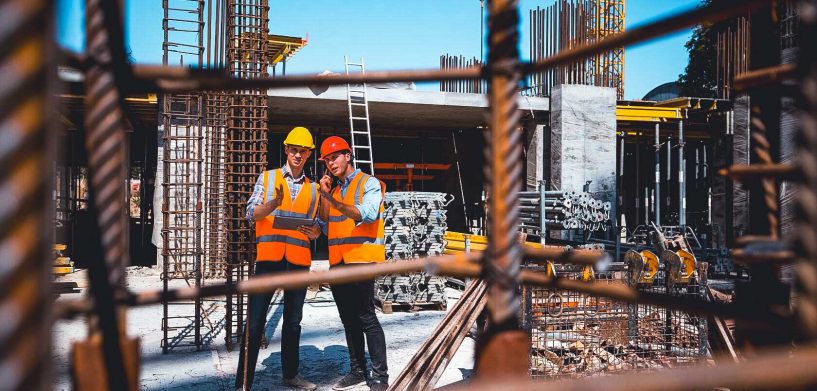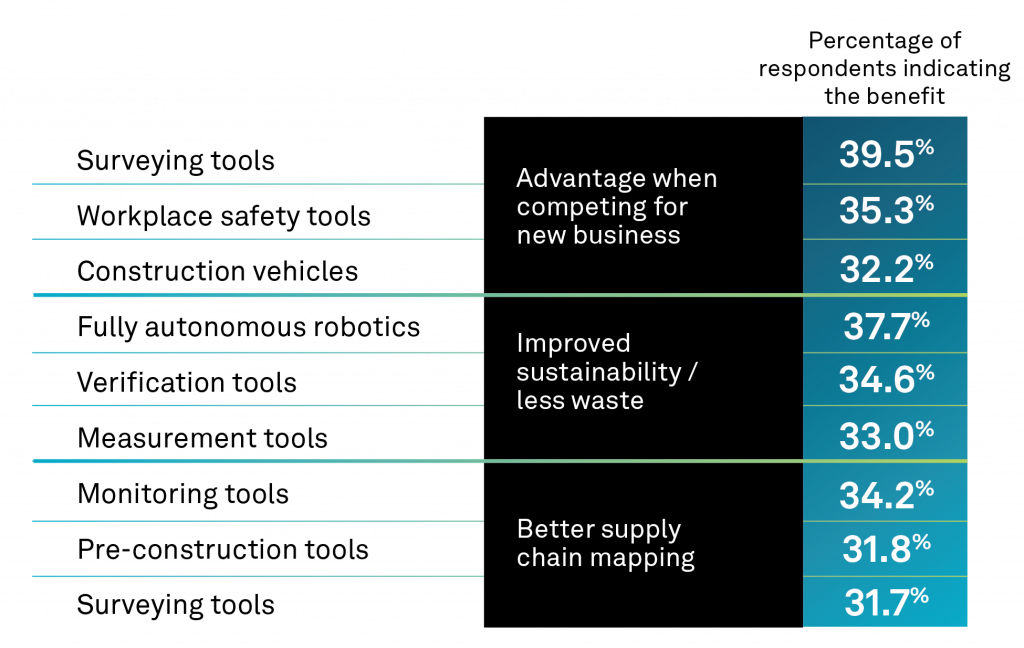Embarking on a journey through the construction industry is like navigating uncharted territory. Construction firms have a roadmap, their most pressing priorities and a compass — the tools and technologies to guide them to their objectives. Autonomous construction technologies in particular are emerging as an advanced compass, promising to steer businesses towards their priorities.
However, the industry has a noticeable disconnect — a contradiction that mirrors a traveller choosing not to follow their compass. The paths firms choose, represented by their investments, often don’t align with the direction their compass points toward: the construction automation technologies that will lead them forward.
Take, for instance, autonomous monitoring tools, which play an essential role in efficient supply chain mapping. Despite being reported to improve supply chain management in the Autonomous Construction Tech Outlook, only 28% of firms are using autonomous monitoring tools today. Similarly, sustainability is a significant landmark for the three- to five-year horizon. However, only 17% of firms invest in fully autonomous robotics, even though 38% of respondents recognise this path’s sustainable benefits.
There could be many explanations for why this disconnect exists, and there is no single answer. In some cases, firms might be wary of the relatively uncharted territory of artificial intelligence (AI) and autonomous technology. Consider the tool 5D building information modelling (5D BIM), an emerging technology that holds great promise but is still developing its capabilities to provide fully autonomous construction cost tracking and management.
Another area ripe for exploration is data aggregation and sharing among trades, a process with vast potential for innovation. While some parts of these processes are automated, there is much untapped potential that promises considerable benefits. Nevertheless, the current improvements in data capture and AI-driven analysis are already proving beneficial for firms who have decided to go down this path.
Technology snapshot: What are the most common benefits associated with specific types of autonomous technology?
Certain autonomous technologies also offer specific advantages. Based on an analysis of the key challenges and priorities of construction firms, as well as the advantages provided by autonomous technology, the following technologies were identified by respondents as contributing to their business objectives.
Technology leaders who use modelling and simulation tools report increased efficiency.
The research found that 35% of technology leaders who reported using autonomous modelling and simulation tools stated that they experienced increased process efficiency. These tools can replace tedious and difficult manual tasks and identify issues in the design that could cause delays and inefficiencies throughout the build phase.
Technology leaders who use fully autonomous robotics report improved sustainability and reduced waste.
Almost 38% of construction firms using fully autonomous robotics report that the most common benefit is improved sustainability. In the case of autonomous reality capture, robots can scan the construction site daily and upload data to identify any areas of concern, proactively address issues and reduce — or even eliminate — the potential for future rework. Assigning robots to repetitive tasks can also improve efficiency, helping firms complete projects faster, freeing up skilled labour for other value-additive tasks and reducing the need to have heavy equipment onsite longer.
Technology leaders who implement autonomous surveying tools experience an advantage when competing for new business.
Automated surveying tools, such as UAVs and terrestrial scanning, can provide a competitive edge in acquiring new business through more detailed and accurate estimates, improve volumetric calculations and reduce risk.
Autonomous surveying can also aid in cost control and project visibility for the owner, which are favourable factors in bid proposals. Additionally, these tools can increase the reliability and precision of survey data — crucial factors in important project decisions.
Technology leaders who use document management systems infused with autonomy note improved safety compliance.
While several autonomous technologies are associated with improving safety compliance, 36% of technology leaders using autonomous document management systems reported an improvement in this area.
One way in which these tools can improve safety compliance is by automating the process of collecting, organising and analysing safety-related documents. For example, automated document management tools can scan and manage training records to ensure that all workers on a construction site have received the necessary safety training and certifications. The device can also flag any workers overdue for training or who have expired certifications, helping managers stay on top of compliance and promptly address any issues.
[Related: Unleashing the potential of construction: the benefits of autonomous technology]
Investing in the construction landscape is about more than the financial commitment; it’s about strategically aligning these investments with the roadmap— the business priorities. It’s about accurately reading the compass, bridging the existing disconnect and understanding that implementing these technologies will help reach the immediate milestones and position firms for future expeditions as technology continues to evolve. In essence, to successfully navigate the terrain of autonomous construction, firms must learn to align their compass with their roadmap.



















